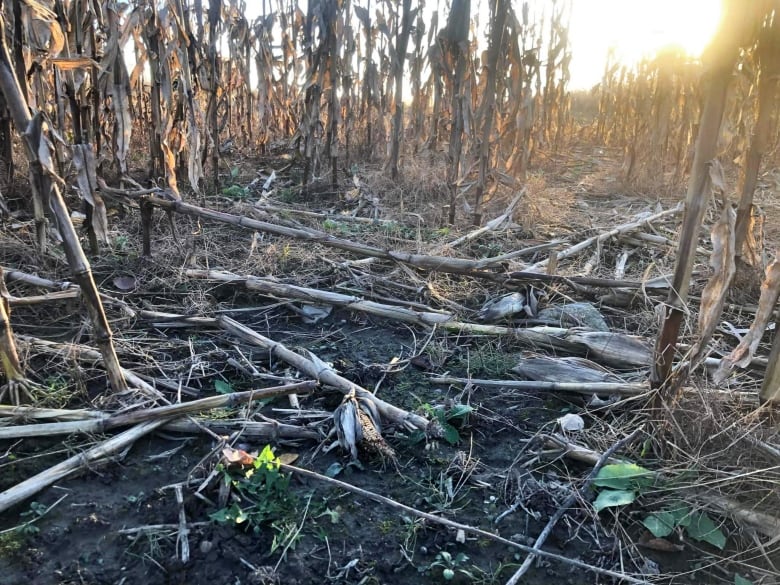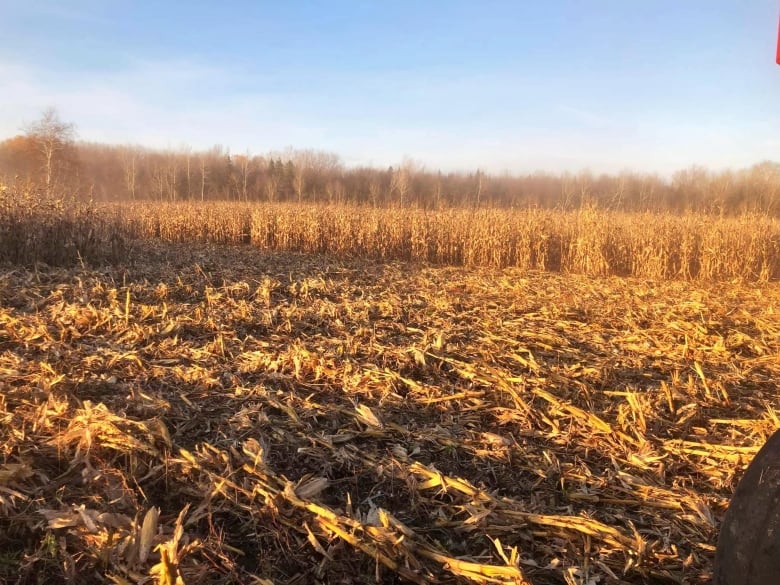
Eight cowboys from Saint-Tite pulled up to Saint-Sévère, Que. in October with their horses, a drone and a mission.
They had been brought in to wrangle 20 fugitive Holsteins on the loose since July.
Sylvain Bourgeois, rodeo manager of the Festival Western de St-Tite, says the rodeo was contacted by Marie-Andrée Cadorette, the general manager of the village of Saint-Sévère, after other attempts had failed.
“Around here, it’s not something common,” Bourgeois said. “Most of the people like to keep their cows in the field with good fencing and then they don’t let them escape like this for that long period.”
It is assumed the cows escaped when they were spooked by a summer thunderstorm and broke through the fencing on a dairy farm near Saint-Barnabé, close to Trois-Rivières.
Since then, they have been contentedly grazing wherever they like and wreaking havoc on farmers’ fields nearby.
“It’s kind of normal for cows to escape pasture, like it’s always greener on the other side of the fence, but you just got to keep them [enclosed],” said Bourgeois. “You can’t wait a couple months like this and expect it’s gonna be easy to gather them again.”
Cowboy mission was Plan Z
The mission with the Saint-Tite team was Plan Z, a last resort, said Jean-Yves St-Arnaud, the mayor of Saint-Sévère. The crew worked a long 12-hour day.
“They lent us barriers which measure six feet, so that the cows don’t jump over it, and eight cowboys and a drone operator. We were well-equipped,” said St-Arnaud.

At one point, it looked like the cowboys had triumphed.
The cows were successfully corralled into a pen. But one managed to escape. From there, everything went south and the herd was on the loose again.
“The others left too. They gathered into the corn fields and into the woods and we lost them,” said St-Arnaud. “The result is: They are still free.”
Tens of thousands of dollars in damages
The cows’ adventures may seem heroic or amusing to the public, but St-Arnaud says it’s quite serious for some local farmers.
He estimates the fugitive cows have caused tens of thousands of dollars of damage as they trample or eat crops under cover of darkness.
“It’s not to eat the soy crop, [they use it] to sleep on top of. So the crop is done with. And when it comes to corn, they eat the top half of it, and leave the bottom half and then the rain goes inside of it,” said St-Arnaud. “So a crop [is] completely lost.”

He says around seven farmers contacted him near the end of October about the situation, but the village — population 812 — initially couldn’t help because it involved private property.
“When animals stay on private property, we as a municipality cannot intervene,” said St-Arnaud. “Around the last week of October … We started asking questions and we intervened once we realized they were going on the road.”
Cows on the street pose a major risk to drivers, he said, and he does “not want to go to the funeral home.”
Although the next step was to contact governmental organizations such as Quebec’s Ministry of Agriculture, Fisheries and Food and the Ministry of Forests, Fauna and Parks, St-Arnaud said the city received conflicting replies — about whose jurisdiction covered cows that have run wild.
While there are alternatives, such as targeting them with tranquilizer guns, they are not without their own challenges, said St-Arnaud.
“When you hit [a cow with tranquilizer] do you think the others will wait patiently?” said St-Arnaud with a chuckle.
“For the well-being of the animal, the best course of action would be to capture them and bring them back to their owner, or someone who could take them in.”
Some cows returned to owner
In a written statement, the vice-president of the local dairy producers’ group, Yves Lamy, said some cows were secured and returned to the owner recently, and the federation is coming up with a plan to round up the rest of the herd. It’s not clear how many cows are still on the run.
Bourgeois says now is the time to act, before the winter freezes the ground and water supply.
“I’m not sure if they’re gonna go back home for that or if they’re gonna stay out in the cold. They’re gonna get hungry,” said Bourgeois, adding that the team of cowboys from Saint-Tite could be available to help out again if needed.
“People think it’s kind of funny that the cowboys went to try to gather cows, but it’s done every day in North America … It’s the easiest way, you can go anywhere with a horse,” said Bourgeois.
“If you know where they are we can go set up another pen and then catch them.”